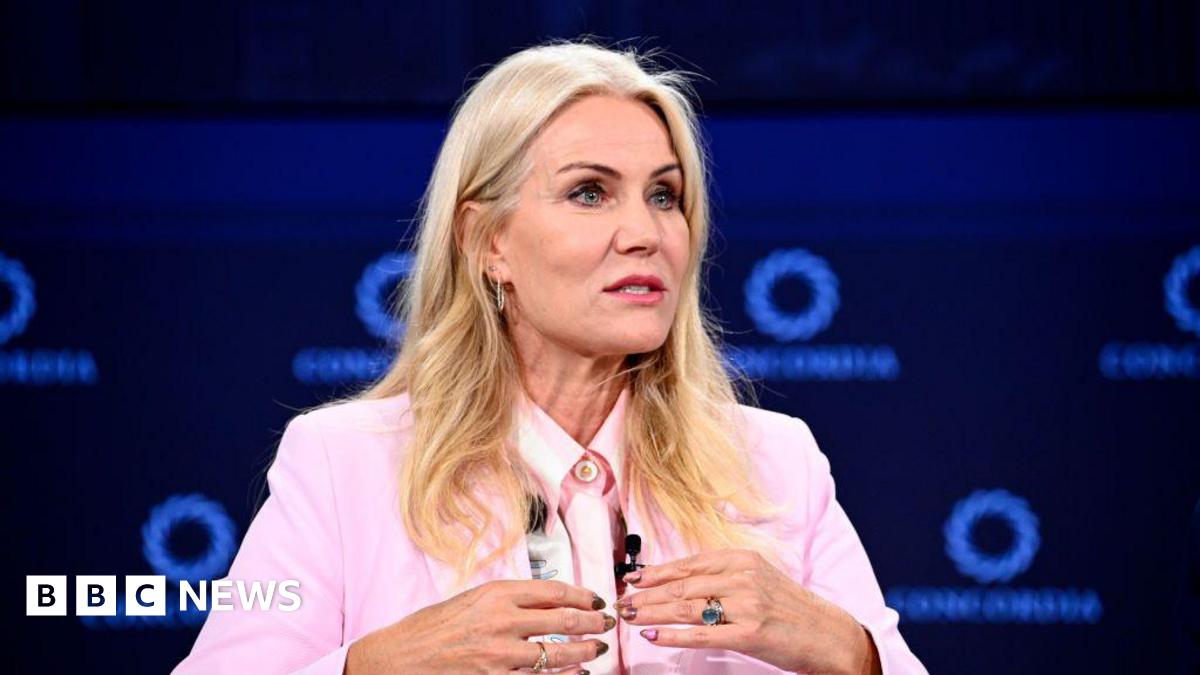This month marks four years since the official start of the COVID-19 pandemic. Among the massive workforce shifts during this time was the exodus—and subsequent return—of women to the labor force.
Just months into the pandemic, the effect on women’s labor force participation was already noticeable, with some experts dubbing the impact the “She-cession.” Women around the country left their jobs in droves, largely driven by disproportionate expectations for caregiving duties in the wake of pandemic-related closures. Meanwhile, female-dominated industries like hospitality saw deep job cuts. Ultimately, 1.8 million women left the workforce during COVID, according to digital talent marketplace The Mom Project.
However, by January 2023, the Center for American Progress reports, the level of American women’s employment had returned to pre-pandemic levels. The rate of participation for prime-age women (25-54) now stands at 77%, one percentage point above where it was in 2019.
The stat seems to suggest a success story, but experts say it’s not finished. HR leaders need to recognize that the expectations of women in the workforce in 2024 are materially different than they were pre-pandemic, as are the challenges they face.
Allison Robinson, founder and chairwoman of The Mom Project, notes that while the rise of flexible working post-pandemic creates “more equal footing for moms,” working mothers are simultaneously navigating a lack of childcare resources, return-to-office mandates and burnout, among other issues. What’s more, when so many women were pushed out of the workforce, it dialed back progress on everything from pay equity to representation in leadership—which HR needs to proactively remedy.
Combined, these obstacles signal to HR leaders that they must align everything from benefits to culture with what women of today want in order to build an inclusive, innovative workforce of the future.
“It is critical,” Robinson says, “that companies not backslide in terms of equity gains for women in the workforce.”
A key factor that has driven women who left during the height of the pandemic back into the workforce has been the rise of flexibility, says Sadie Funk, national director of The Best Place for Working Parents®, a collaborative, national business network. The organization offers a designation of the same name for companies that provide innovative family-friendly benefits and policies.
According to the U.S. Census Bureau, the number of Americans with access to remote work tripled between 2019 and 2021. And while many employers have started rolling out return-to-office models, office attendance remains 30% lower than pre-pandemic, according to McKinsey & Co.
Flexibility in where and how people work goes hand in hand with family-friendliness: In its recent annual report, 96% of the organizations that made the Best Place for Working Parents® list offer flexible work schedules, compared to 94.5% pre-pandemic; meanwhile, 93% currently allow remote work, up from 89%.
Funk says employees at Best Place for Working Parents® companies rate their workplaces as nearly 125 times more supportive than those not on the list. Included organizations that offer remote work see employees who are twice as motivated and have double the number of positive health outcomes as those who don’t have access to remote work.
The pandemic shed new light on these benefits of flexibility for working parents, says Cassandra Pratt, senior vice president of people at Progyny, a women’s health benefits management company.
“When people were able to work remotely and there was more flexibility, there became a real shift in how people thought about what used to be called work/life balance—and what’s now called work/life integration,” Pratt says. “People really started to reassess what we believe is important.”
That’s a reality that will continue to drive women’s job choices, Funk says. For instance, she cites one recent study that found 70% of women who left the workforce during the pandemic say they would have stayed if they had more flexibility at their jobs.
“For many working parents,” Funk says, “family-friendly benefits can be the key differentiator in where they choose to work.”
Employers, guided by HR, Pratt says, need to find the right formula for flexibility—considering what works from a business standpoint and what employees want. At Progyny—whose employee population is 75% women—that has meant a hybrid work model, where employees are in-office Tuesday through Thursday.
“You have to assess based on business needs, the needs for a particular role and what employees are craving,” Pratt says. “What is the right balance? If you push too hard in one direction or make too many assumptions, you could lose out on key talent.”
Leading-edge benefits for women workers
A degree of flexibility is table stakes for employers that want to recruit and retain women today, experts say—but that’s far from all they need to do.
Among the other top 10 family-friendly benefits that Best Place for Working Parents® companies deploy are parental leave, benefits for nursing parents and back-up childcare. While just 11% have an on-site childcare facility, this is a benefit the organization expects to see grow among employers on the leading edge. Since 2019, the number of surveyed organizations that offer on-site childcare has grown 47%—and they have a retention rate that is 7.4 times that of those without childcare facilities.
“We anticipate that policies, perks and benefits being implemented today are here to stay, as these have been proven to yield economic benefits for companies,” Funk says.
Family-friendly benefits were a key factor in Progyny’s ability to grow its headcount by more than 40% over the last year, says Pratt.

The organization offers 16 weeks of primary caregiver leave, as well as specific leave programs for secondary caregiver duties, pregnancy loss and NICU experiences. Progyny was founded with a focus on fertility benefits and has since expanded its product suite to cover a range of women’s health topics. Its internal benefits have likewise diversified, with programs to assist women with fertility and preconception to maternity and post-partum and ERGs for parents of all experiences.
Such a holistic approach is key to retaining women for the long term, Robinson says.
“Parenting is a marathon, not a sprint,” she says. “So, while good parental leave policies are important in the beginning of this journey, there are many other benefits and support needed once a parent returns to work and at each new stage of parenthood—childcare support, flexibility, career development and PTO.”
Progyny has also recognized the need for benefits that speak to the experiences of all women workers—not just those with children—which drove the addition of menopause benefits.
“Menopause is one of those topics that every woman is going to go through at some point,” Pratt says. “Yet for so long, employers have disregarded the symptoms—which can be quite as severe as those of women going through fertility or pregnancy. You have to look at people across the whole spectrum, understand the demographics of your population, what’s important to them—and keep talking about it.”
Building inclusive cultures beyond benefits
Listening to employees revealed to leadership the need for menopause benefits, Pratt says, along with other additions like pet care support, which she notes has had an extremely high utilization rate.
“Not all women have small children at home—some are caring for parents, some are new to the workforce and looking for connections,” Pratt notes. “You have to survey your population and truly understand what they need.”
Regular surveys, Funk adds, are “critical to implementing impactful policies that drive retention and engagement”—and to helping employers maximize the ROI of such policy additions.
Equally important is ensuring employees understand the benefits and resources available to them, she adds.
“Many employers offer policies that their employees simply aren’t aware of, so making it a habit to check in with employees regularly is vital—whether that is through calls, emails, surveys or just anecdotal employee feedback,” Funk says.
Opening the lines of communication around supportive benefits can also help reduce the stigma associated with taking advantage of them—which, Pratt notes, can be a significant challenge in benefits utilization. Particularly when it comes to parental leave, many parents—especially women—may be hesitant to use their full time off for fear it will reflect poorly on their desire to grow with the company.
“You can have lots of very robust leave programs but if you don’t articulate what they are or have policies that advocate for them and normalize them, people are going to be nervous about taking the time,” Pratt says.
Progyny saw this firsthand. In the wake of the pandemic, leadership strategically enhanced messaging about leave programs—with leaders and managers intentionally encouraging workers to take the full amount of time allotted to them—and adoption rates increased.
“It’s because we increased our communication strategy,” Pratt says. “We started really encouraging people not to leave anything on the table.”
To help employers and their parent populations navigate the complexities of leave, The Mom Project launched its “Maternityship” offering, which Robinson says is gaining significant traction. The organization works with an employer to help secure coverage for the employee while they are out on leave and designs a strategy for bringing them back into the fold.
“The employee can take their leave with less stress and guilt of leaving a gap in their team,” Robinson says, “and it also provides a great way for moms who want to get back into the workforce in a very specific project-, time-based arrangement.”

Without such supports in place, parents may feel forced to put their careers on hold—and moms are 114% more likely than dads to take a career pause, Robinson says.
The Mom Project’s research found that 51% of parents surveyed said becoming a parent negatively affected their compensation, and half cited negative effects on career advancement.
That’s why Progyny continues to offer promotions even when a worker is out on leave—to ensure the entire workforce sees that taking advantage of family-friendly benefits like leave won’t hinder their ability to advance, Pratt says.
Creative storytelling can also help employers reach that aim. Progyny, for instance, uses its social media channels to tell workers’ stories, such as those of employees coming back from or going out on leave, along with women in unique roles like finance or engineering, which typically may be male-dominated.
Such efforts can help employers reignite progress for working women’s advancement that slowed during the pandemic—a goal that Pratt says must be supported by business strategies that center on empathy.
“Now that women are choosing to return to the workforce,” Pratt says, “they’re looking for employers to meet them where they are, where their true priorities are—not forcing them to sacrifice family for work.”
Credit: Source link











